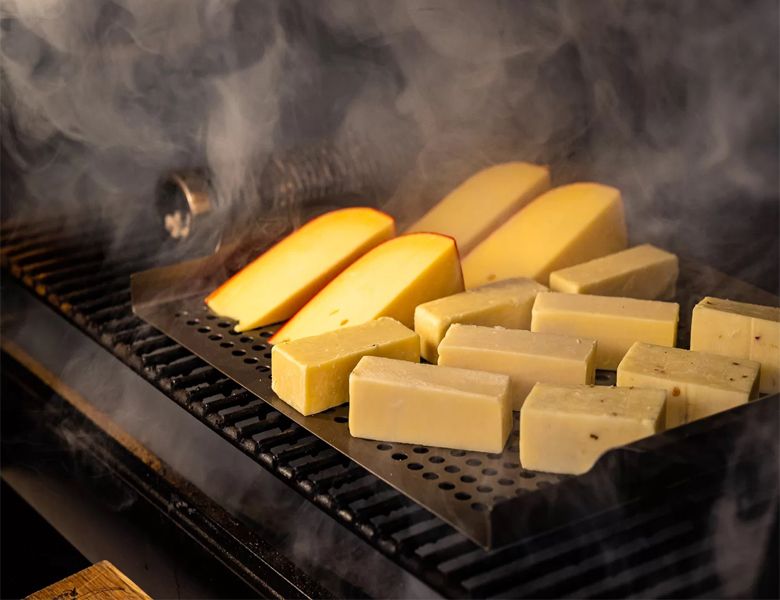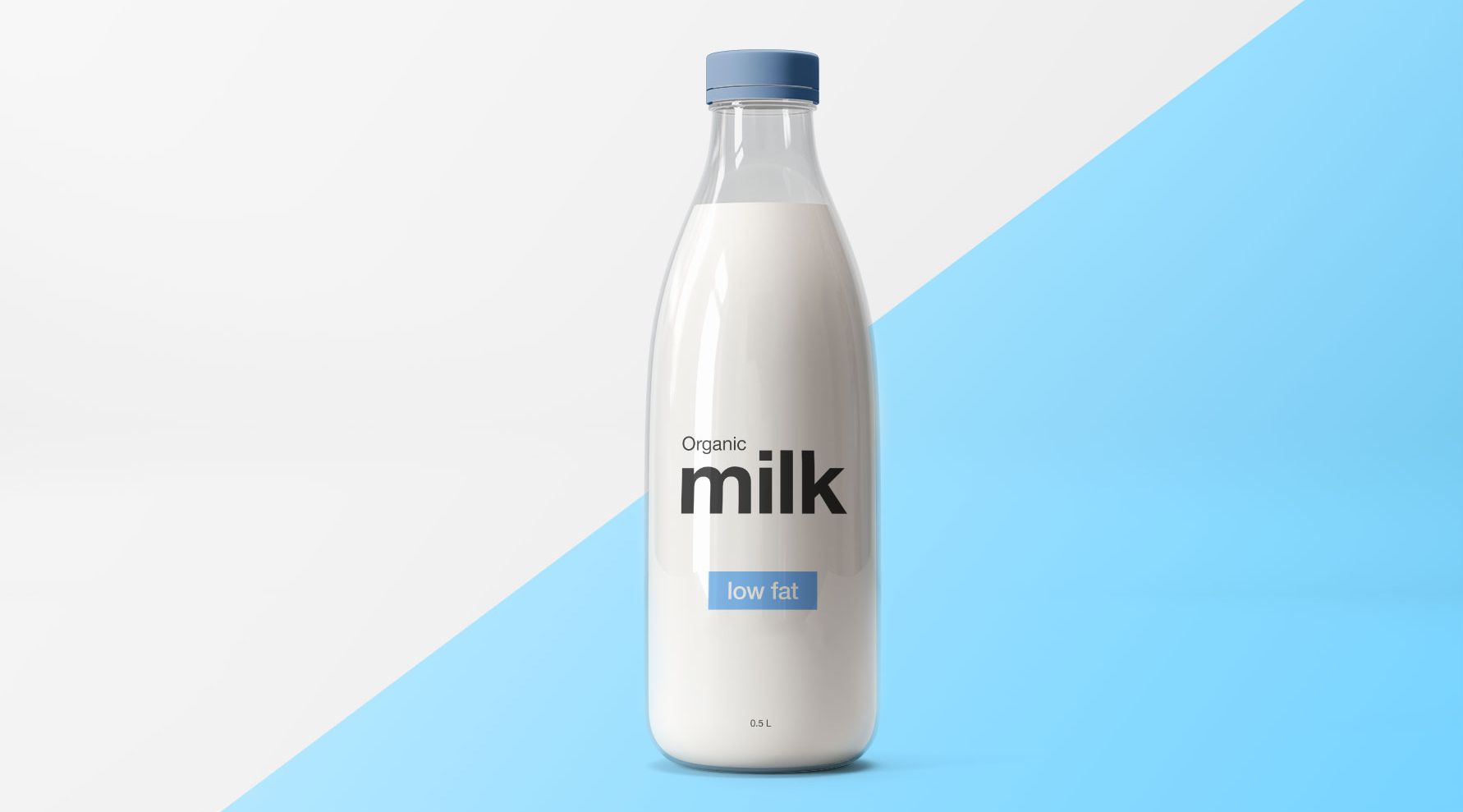Smoked cheese: production and toxic chemical contamination

- | آتاماد |
- Viewer: 185
The smoking process determines the characteristic flavor, odor, color, and texture of different types of cheeses. Some smoke compounds have bacteriostatic and antioxidant effects and may act as preservatives. Because of its sensorial properties, smoked cheese is appreciated by consumers. However, with the smoking process, there is a risk of toxic polycyclic aromatic hydrocarbon (PAHs) formation.
Although the smoking process is one of the oldest preservation methods, today foods are smoked for sensory quality rather than preservative effect. Sensory characteristics are one of the important qualitative characteristics that consumers use to judge the acceptability of a product. The colors of smoked cheese available in the market range from golden yellow to dark brown, suggesting that producers have different opinions concerning consumer preferences.
Smoked cheese production
The most suitable cheeses for smoking are hard or semi-hard cheeses such as Cheddar, Mozzarella, Gouda, Monterey Jack, Gruyere, Brie, and Swiss.
Smoked cheese is mainly produced by three methods: the smoke can be applied to cheese as natural smoke, cold and hot smoking, or as smoke flavoring. Smoking by means of smoke flavorings is a very practical technique that makes it possible to obtain homogeneous cheese with very different sensory characteristics. However, in some countries, such as Spain, the smoking of cheese with smoke flavorings is not permitted.
Smoke can be produced by different types of vegetable materials. Birchwood, oak, beech, alder, hawthorn, pine, fig tree, dry prickly, pear, or almond are used for smoking cheese. Combustion and friction are among the different procedures that can generate smoke.
The wood, the procedure, and the smoke generation method used to apply the smoke to cheese are very major steps in the manufacture of smoked cheese, having a significant effect on cheese color, odor, taste, and texture, as well as on its oxidative stability, microbial growth, and safety. The smoke, produced by either cold/hot smoking or liquid smoking, contributes to the formation of the characteristic flavor, odor, color, and texture.
Effects of smoking on the sensory characteristics and composition of cheese
• Volatile composition
The smoking process significantly enriches the cheese with volatile compounds belonging to a wide variety of chemical families. The presence of a great number of smoke components such as furan-methanol, aldehydes (vanillin, furfural, benzaldehyde), cyclic ketones, related to coffee, nutty, caramel notes, aromatic ketones; furan and pyran derivatives that give pleasant flavors such as caramel, sweet, toasted malt or bread-like, nitrogen derivatives; and mainly phenol, guaiacol, and syringol derivatives have been reported in smoked cheese. Moreover, some phenolic compounds have been identified as potent odorants, playing an important role in the flavor of smoked cheeses. These compounds modify the cheese's sensory properties and influence stability and microbial growth.
• Sensory characteristics
As commented on above, the smoking process has a clear influence on the sensory characteristics of cheese, including odor and flavor, texture, and few studies concerning relationships between parameters of the smoking process and sensory properties; the parameters considered in these studies are the vegetable matter used and the smoking time. Few studies have been done on the relationships between the compounds obtained in the cheese by the smoking process and the sensory properties.
Effect of smoking on microbiological growth
The phenolic compounds, especially isoeugenol, have been attributed to antimicrobial activity which avoids or reduces the occurrence of bacteria such as lactobacilli, lactococci, streptococci, and enterococci and mold growth. However, other authors have observed no effect of smoking on coliforms, Staphylococcus, Micrococcus, certain yeast, or molds.
Contamination with toxic compounds
If the smoking process is not adequately controlled, it can lead to cheese PAH contamination; this is favored by the high-fat content of cheese.
The high concentrations of light PAHs are noteworthy, especially those of naphthalene, recently included in the group of possible carcinogens to humans by the International Agency for Research on Cancer. However, it should be commented on that, despite the variety of European smoked cheese and the occurrence of PAHs in smoked cheese, legal limits for their concentrations in this smoked food have not been established in the European Union, except for those smoked with smoke flavorings, where a maximum level of 0.03 /kg of BaP has been fixed. Nevertheless, some countries have defined specific limits for traditionally smoked cheese.
Research has shown that different types of wood lead to different contamination degrees and that certain woods such as fir should be avoided since they give rise to higher concentrations of PAHs than others.
It has also been observed that smoking cheese in a wood barrel showed higher PAH concentrations than those smoked in a smoking chamber when the same vegetable material was used, possibly due to better control of the combustion conditions in the latter. On the other hand, recent research has shown that the position of the cheeses in the smoking chamber can also affect their PAH content.
Conclusion
Taking into account the great influence of the parameters involved in the smoking process on the sensory characteristics and the safety of the product, more studies are needed to optimize and standardize the smoking methods used for cheese production; this would make it possible to improve the quality and safety of smoked cheese. Special attention should be paid to avoiding the contamination of cheese with toxic compounds as a consequence of the smoking process.
Due to the mutagenic and carcinogenic potential of PAHs, it is essential to control these compounds in the human food chain. Smoked cheese is a popular food, but to our knowledge, there are only several papers that focus on PAH levels in cheese. Given that smoking differentiates organoleptic properties that are appreciated by consumers, to reduce the formation of PAHs in smoked cheeses, attention must be paid to smoking time, combustion temperatures, and smoke-generating material.
Reference:
Ozcan, T., Akpinar-Bayizit, A., Sahin, O.I. and Yilmaz-Ersan, L., 2011. The formation of polycyclic hydrocarbons during smoking process of cheese. Mljekarstvo/Dairy, 61(3).
Preedy, V.R., Watson, R.R. and Patel, V.B. eds., 2013. Handbook of cheese in health: production, nutrition and medical sciences: Production, nutrition and medical sciences (Vol. 6). Wageningen academic publishers.
GET IN TOUCH
Copyright © 2023 Atamad.com All right reserved
Website design and SEO services by Seohama team – Web hosting by Sarverhama
Copyright © 2023 Atamad.com All right reserved
Website design and SEO services by Seohama team – Web hosting by Sarverhama








